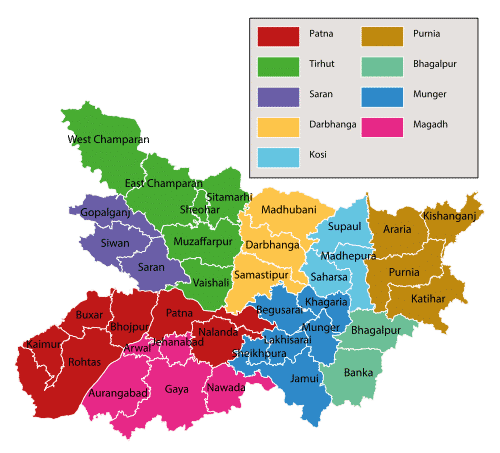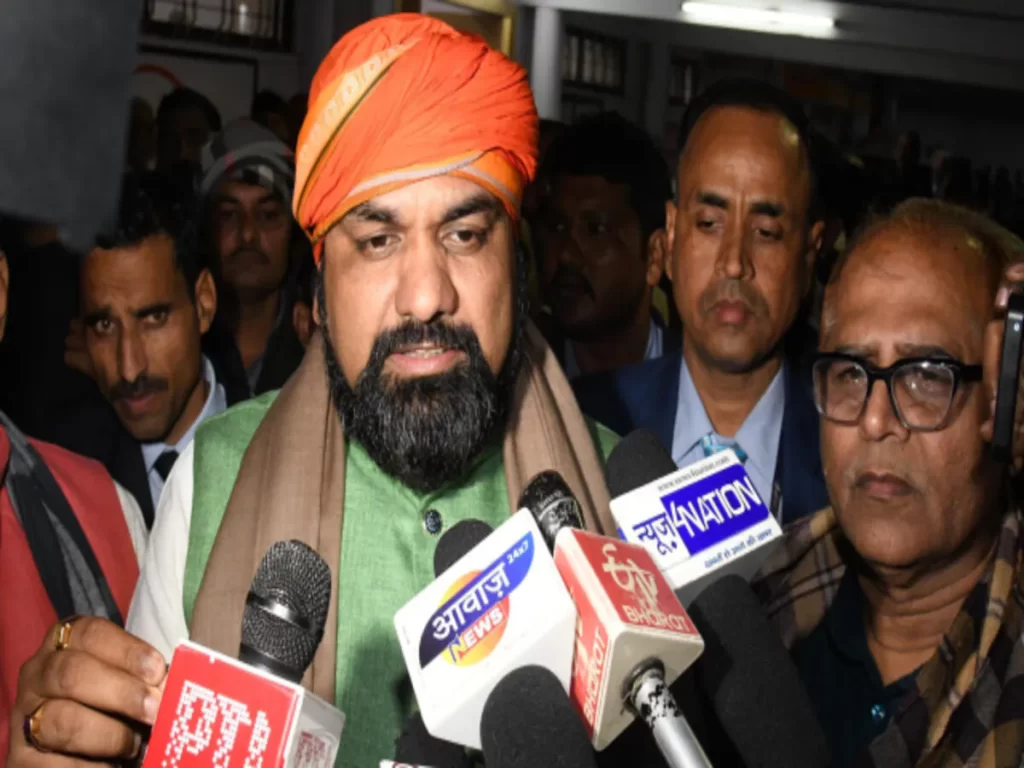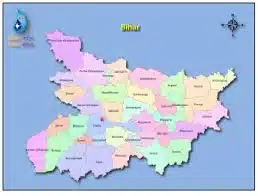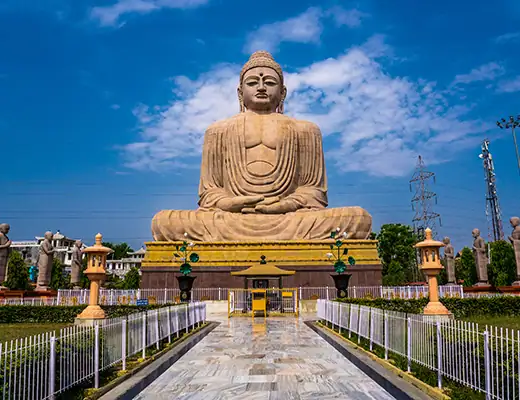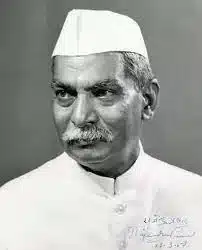VAISHALI
Vaishali derives its name from King Vishal. Vaishali was the capital of the vibrant Vajji confederation, since before the birth of Mahavira (c. 599 BC), which suggests that it was perhaps the first republic in the world, similar to those later found in ancient Greece.
Ashoka Pillar
- The pillars of Ashoka are a series of columns dispersed throughout the Indian subcontinent, erected or at least inscribed with edicts by the Mauryan king Ashoka during his reign from c. 268 to 232 BC.
- Of the pillars erected by him, twenty still survive including those with inscriptions of his edicts.
- Only a few with animal capitals survive of which seven complete specimens are known.
- Two pillars were relocated by Firuz Shah Tughlaq to Delhi.
- Several pillars were relocated later by Mughal Empire rulers, the animal capitals being removed.
- Averaging between 12 to 15 m (40 to 50 ft) in height, and weighing up to 50 tons each, the pillars were dragged, sometimes hundreds of miles, to where they were erected.
- The Pillars of Ashoka are among the earliest known stone sculptural remains from India. Only another pillar fragment, the Pataliputra capital, is possibly from a slightly earlier date.
- It is thought that before the 3rd century BC, wood rather than stone was used as the main material for India architectural constructions, and that stone may have been adopted following interaction with the Persians and the Greeks.
- A graphic representation of the Lion Capital of Ashoka from the column there was adopted as the official Emblem of India in 1950.
Licchvi Stupa (Mud Stupa)
- Licchvi Stupa is 35 Km from Hajipur, district headquarter of Vaishali, beside ‘Abhishek Pushkarini tank’.
- Nowadays this holy place is known as ‘Buddha Asthi-Kalash Asthal’. Lichhavi’s built (in 5th Century BC) Lichhavi Stupa with the 8th part of holy mortal remains (Relic) of Lord Buddha, in Vaishali, at this place.
- In 1958 – 1962, in an archaeological excavation this Stupa came into light.
- The Relic Casket was discovered in this excavation. The casket contained, besides the ashes of Lord Buddha mixed with earth, a piece of Conch, pieces of Beads, a thin Golden Leaf and a copper punch-marked Coin.
- Since 1972, the holy “Relic of Lord Buddha’ has been preserved in Patna Museum.
Shanti Stupa
- The Vishwa shanti stupa is erected according to the teaching of the Saodharma Pundarika Sutra (The lotus Sutra) to disseminate love and peace and to create “The pure Land” on the earth.
- After seeing the tragedy of atomic bombs in Hiroshima and Nagasaki of Japan, at the end of the World war 2. The Vishwa Shanti Stupa, Vaishali has been built by Nipponzan Myhoji and Rajgir Buddha Vihar Society. Through contribution of devotees in India and Japan, The Lord Buddha’s relics have been enshrined on the foundation and on the top of the stupa.
GAYA
Bodh Gaya
- Bodh Gaya is a small town in the state of Bihar. Considered one of the most important Buddhist pilgrimage sites, it’s dominated by the ancient brick Mahabodhi Temple Complex, built to mark the site where the Buddha attained enlightenment beneath a sacred Bodhi Tree. A direct descendant of the tree still exists within the complex today, along with six other sacred sites, including a lotus pond.
Maha Bodhi Temple
- Maha Bodhi Temple, one of the holiest sites of Buddhism, marking the spot of the Buddha’s enlightenment (bodhi). It is located in Bodh Gaya (in central Bihar state, northeastern India) on the banks of the Niranjana River.
- The Maha Bodhi Temple is one of the oldest brick temples in India.
- The original structure, later replaced, was built by the Mauryan emperor Ashoka (died c. 238 BCE), one of Buddhism’s most important proselytes, to commemorate the Buddha’s enlightenment.
- The temple is 55 metres (180 feet) in height. Its pyramidal shikhara (tower) comprises several layers of niches, arch motifs, and fine engravings. Four towers, each identical to its central counterpart but smaller in size and topped with an umbrella-like dome, adorn the corners of the two-story structure. A shrine inside the temple holds a yellow sandstone statue of the Buddha encased in glass.
- The Bodhi tree, under which the Buddha is said to have sat until he attained enlightenment, stands adjacent to the temple. Ashoka’s stone slab purporting to mark the exact position where the Buddha sat is traditionally called the Buddha’s vajrasana (literally “diamond throne” or “thunder seat”). Stone railings surround the temple as well as the Bo tree. One of the most famous of Ashoka’s many pillars (on which he had engraved his edicts and his understanding of religious doctrine) stands at the southeast corner of the temple.
- The 4.8-hectare (11.9-acre) complex also includes ancient shrines and modern structures built by Buddhist devotees. It was recognized as a UNESCO World Heritage site in 2002.
Bodhi Tree
- The Bodhi Tree, also known as Bo (from Sinhalese: Bo), “peepal tree,” and “arasa maram” , was a large and very old sacred fig tree (Ficus religiosa) located in Bodh Gaya, under which Siddhartha Gautama, the spiritual teacher who later became known as the Buddha, is said to have attained enlightenment (Bodhi).
- In religious iconography, the Bodhi Tree is recognizable by its heart-shaped leaves, which are usually prominently displayed.
- The term “Bodhi Tree” is also widely applied to currently existing trees, particularly the Sacred Fig (Ficus religiosa) growing at the Mahabodhi Temple in Bodh Gaya, which is often cited as a direct descendant from the original specimen planted in 288 BC. This tree is a frequent destination for pilgrims, being the most important of the four main Buddhist pilgrimage sites.
- Other holy Bodhi trees which have a great significance in the history of Buddhism are the Anandabodhi tree in Sravasti and the Bodhi tree in Anuradhapura, Sri Lanka. Both are believed to have been propagated from the original Bodhi tree.
Vishnupad Temple
- Vishnupada Temple is an ancient temple in Gaya, India. It is a Hindu temple, dedicated to Lord Vishnu.
- This temple is located along the Falgu River, marked by a footprint of Lord Vishnu known as Dharmasila, incised into a block of basalt. The Brahmkalpit Brahmans are the traditional priest of the temple from ancient time who is known as Gayawal Tirth Purohit or Panda. Several legendary saints as Ramanujacharya, Madhvacharya, Chaitanya Mahaprabhu and Sri Ramakrishna have visited this shrine.
- The construction date of temple is unknown and it is believed that Rama along with Sita had visited this place. The present day structure was rebuilt by Devi Ahilya Bai Holkar, the ruler of Indore, in 1787, on the banks of the Falgu river.
- This is believed that the temple was built with the footprints of Lord Vishnu in the centre. In Hinduism, this footprint marks the act of Lord Vishnu subduing Gayasur by placing his foot on his chest. Inside the Vishnupad Mandir, the 40 cm long footprint of Lord Vishnu is imprinted in solid rock and surrounded by a silver plated basin. The height of this temple is 30 meters and it has 8 rows of beautifully carved pillars which support the pavilion. The temple is built of large gray granite blocks jointed with iron clamps.
Dungeshwari Cave Temple
- Dungeshwari Cave Temples, also known as Mahakala caves, is situated 12 km north-east of Bodhgaya, in Gaya district Bihar.
- A Hindu goddess deity Dungeshwari is placed inside the cave temple.
- Dungeshwari cave temples are also popular as Sujata Sthan to local people. It is believed that when Buddha was doing his self-mortification, he became frail, feeble and starved. When he rested under a Banayan tree, a village woman named Sujata offered him food. Buddha accepted her offerings and consumed the food; his explicit approval presented him with a divine truth that neither extreme self indulgence nor self-abasement is the right way to attain enlightenment. Buddha attained the knowledge that following the middle path will lead to attaining the supreme nirvana. Sujata Sthan or Dungeshwari Temple stands as a symbol commemorating this event.
Mangla Gauri Temple
- The Mangla Gauri Temple in Gaya, Bihar, India has been mentioned in Padma Purana, Vayu Purana and Agni Purana and in other scriptures and tantric works.
- This temple is among the eighteen maha shakti Peeth.
- The present temple dates back to 15th century.
- The shrine is dedicated to Shakti or the mother Goddess in the predominantly Vaishnavite pilgrimage center of Gaya.
- Mangalagauri is worshiped as the Goddess of benevolence.
- It is a very old temple built in the 15th century. We have to climb up a small hillock to reach the temple. The steps route is in between houses of local people. At the starting of steps route, there is the temple of Bhima (One of Five Pandavas). We can see his knee impression here. Here Bhima did Shraddhakarma, hence called as Bhimvedi Gaya.
Bhagalpur
Vikramshila
- Vikramshila was established as a measure when the quality of education at Nalanda started declining.
- Found by the Pala King Dharmapala, Vikramshila was a part of the network of the five important learning centres of the era.
Mandara Parvat (Hill)
- Mandara Parvat (Hill) is located about 48 km to the south of Bhagalpur city in Bihar.
- Mandara is a nearly 750 feet tall granite hill, and according to a mythological text, Bhagalpur was the place where Samudra Manthan took place, and the Devatas and the Asuras churned the ocean of milk using Mount Mandara to obtain Elixir. The Serpent King Vasuki is said to have offered himself to be used as a rope to churn the ocean of milk, and the faint impressions of a coil on the Mandara hill stand as a proof of this story.
- One of the Purana says that Lord Vishnu Defeated the demon Madhu and placed the hill which is now known as Mandara, over him.
- The conch shell, Panchajanya, which marked the start of the war of Mahabharata is believed to have been obtained from the Shankha Kunda.
- Kalidasa refers to Vishnu’s foot marks on Mount Mandara in his epic Kumarasambhava.
- The Hill happens to have numerous sculptures of Hindu Gods cut into its Rocks.
- A belief among the Jains depicts that the 12th Tirthankara, Vasupujya attained Nirvana at the peak of the same hill.
Kuppaghat
- Kuppaghat is a place located by the banks of the holy river Ganges in Bhagalpur, Bihar. Kuppaghat translates to “cave by the banks of a river” and accordingly has a cave which is believed to have been used by Maharshi Mehi Paramhans as a place for meditation. Kuppaghat has been transformed in the later years as Maharshi Mehi Ashram and has grown to be a pilgrimage for the Followers of Santmat. Every year on the occasion of the Birth Anniversary of Maharshi Mehi, Maharshi Santsevi who was Mehi’s successor and on Guru Purnima, the Ashram is visited by many devotees. This dearness of the devotees made the Ashram as the National Headquarters of Akhila Bharatiya Santmat-Satsang.
Ajgaivinath Temple
- Ajgaivinath Temple, located in Sultanganj, is one of the most famous Hindu Temples dedicated to Lord Shiva.
- The Idol in the main temple of Ajgaibnath is believed to be Swayambhu (Self-manifester).
- The temple has been associated with Muni Jahnu, as a belief says that the Idol in the Ajgaivinath Temple protruded in Jahnu Muni’s ashram. There is a story which says that when Muni Jahnu was meditating in his ashram, the Ganges on her way to the ocean disturbed Jahnu with the ripples of her waves. Muni Jahnu is believed to have swallowed the whole river, and Muni Bhagirath saved the Ganges by making an incision on Jahnu’s thighs to make way for the Ganges. Thus river Ganges received the name Jahnavi
Kaimur
- Baidyanath :Baidyanath Village is situated at 9 kms south of Ramgarh block headquarters. A Shiva temple built by the late Pratihar dynasty is located here. Coins and valuables of historical importance have been unearthed here.
- Ramgarh : Ramgarh village in the Bhagwanpur block in Bhabua Subdivision contains the famous Mundeshwari temple, built on a hilltop at a height of about 600 feet. Inscriptions of archeological importance found here describe the temple to be old enough to have been built around the year 635 A.D.
West Champaran
- NANDANGARH AND CHANKIGARH:- Nandangarh is situated in Lauria block while Chankigarh is situated in Narkatiaganj block. These are actually two big mounds which are the remains of palaces of Nanda Dynasty and Chanakya, the world famous economist, Nandangarh has also been conjectured as the ashes Stupa where the ashes of Buddha are said to have been enshrined.
- ASHOKA PILLARS:- About one kilometer east of Nandangarh in Lauria block is the lion pillar of Ashoka, over 2300 years old and is in excellent condition. This pillar is 35 feet in height and its base diameter is 35 inches and upper diameter is 22 inches. Its massiveness and exquisite finish furnish striking proof of the skill and resources of the masons of Ashokan age. Two more such pillars with their capitals removed have been discovered in Rampurwa village, close to Gandhi’s Bhitiharawa Ashram in Gaunaha block. One of their capitals, the bull is now in the National Museum at New Delhi and the other, the lion, is at Calcutta Museum.
Parks and Sanctuaries are discussed in a separate article, checkout the links given below.
Parks And Sanctuaries Of Bihar
Also refer :
- Download the pdf of Important MCQs From the History Of Ancient India
- List Of Important Inscriptions In India

